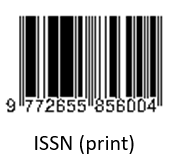Production and Characterization of Bio-Briquettes from Coconut Leaves and Cassava Peels
(1) Universitas Muhammadiyah Jakarta
(2) Universitas Muhammadiyah Jakarta
(3) Universitas Muhammadiyah Jakarta
(4) Universitas Muhammadiyah Jakarta
(*) Corresponding Author
Abstract
Full Text:
PDFReferences
J. D. Hunt, D. Stilpen, and M. A. V. de Freitas, A Review of the Causes, Impacts and Solutions for Electricity Supply Crisis in Brazil, (2022).
O. Ellabban, H. Abu-Rub, and F. Blaabjerg, Renewable energy resources: Current status, future prospects and their enabling technology, Renew. Sustain. Energy Rev., 39 (2014) 748–764.
D. Maradin, Advantages and Disadvantages of Renewable Energy Sources Utilization, Int. J. Energy Econ. Policy, 11(3) (2021) 176–183.
International Energy Agency, Global Energy Review 2020 Renewables, (2020).
K. E. Lorber and A. Ragoßnig, Solid recovered fuels 2.0 – ‘what’s new?’, Waste Manag. Res., 30 (4) (2012) 333– 334.
P. K. Sadh, S. Duhan, and J. S. Duhan, Agro-industrial wastes and their utilization using solid state fermentation: a review, Bioresour. Bioprocess, 5 (1) (2018) 15.
F. E. Hirniah, Analisis Energi dalam Pembuatan Briket Arang dari Kulit Singkong dengan Tepung Tapioka Sebagai Perekat, Jember, (2020).
O.A. Oyelaran, O. Balogun, A.O. Ambali, and J. K. Abidoye, Characterization of Briquette Produced from Tannery Solid Waste, J. Mater. Eng. Struct., 4 (2017) 79–86.
S. Anggraeni, S. N. Hofifah, A. B. D. Nandiyanto, And M. R. Bilad, Effects Of Particle Size And Composition Of Cassava Peels And Rice Husk On The Briquette Performance, J. Eng. Sci. Technol., 16 (1) (2021) 527–542.
BSN, SNI 01-6235-2000 tentang Briket Arang Kayu. Badan Standar Nasional, Jakarta, (2000) 8.
Leco, AC600 Isoperibol Calorimeter. Semi-Automatic Gross Calorific Content Analyzer, (2022). [Online]. Available: https://www.leco.com/product/ac600. [Accessed: 09-Sep-2022].
D Nurba, M Yasar, Mustaqimah, R. Fadhil, S P Sari, and C V Mysa, Performance of Corncobs and Wood Charcoal Briquette as Heat Energy Sources in In-Store Dryer, IOP Conference Series: Earth and Environmental Science 365 (2019) 1–10.
Ropiudin and K. Syska, Analisis Kualitas Biobriket Karbonisasi Tempurung Kelapa dan Kulit Singkong dengan Perekat Tepung Singkong, J. Agric. Biosyst. Eng. Res., 3 (1) (2022) 19–38.
F. T. Aprilia, The Use of Sengon (Albizia Chinensis) Wood and Cassava Peel in Making Briquettes, Politeknik Negeri Jember, Jember, (2022).
J. T. Oladeji and O. R. Oyetunji, Investigations into Physical and Fuel Characteristics of Briquettes Produced from Cassava and Yam Peels, J. Energy Technol. Policy, 3 (7) (2013) 40–46.
U. E. Terhider and O. E. Ediba, Investigation of The Combustion Characteristics of Briquettes Produced from Cassava Peels, Mango Nuts and Orange Peels, Int. Res. J. Mod. Eng. Technol. Sci., 3 (10) (2021) 736–742.
L. Rumiyanti, A. Irnanda, and Y. Hendronursito, Analisis Proksimat pada Briket Arang Limbah Pertanian, J. Fis. dan Apl., 3 (1) (2018) 15–22.
DOI: https://doi.org/10.24071/ijasst.v5i2.5567
Refbacks
- There are currently no refbacks.
Publisher : Faculty of Science and Technology
Society/Institution : Sanata Dharma University

This work is licensed under a Creative Commons Attribution 4.0 International License.











